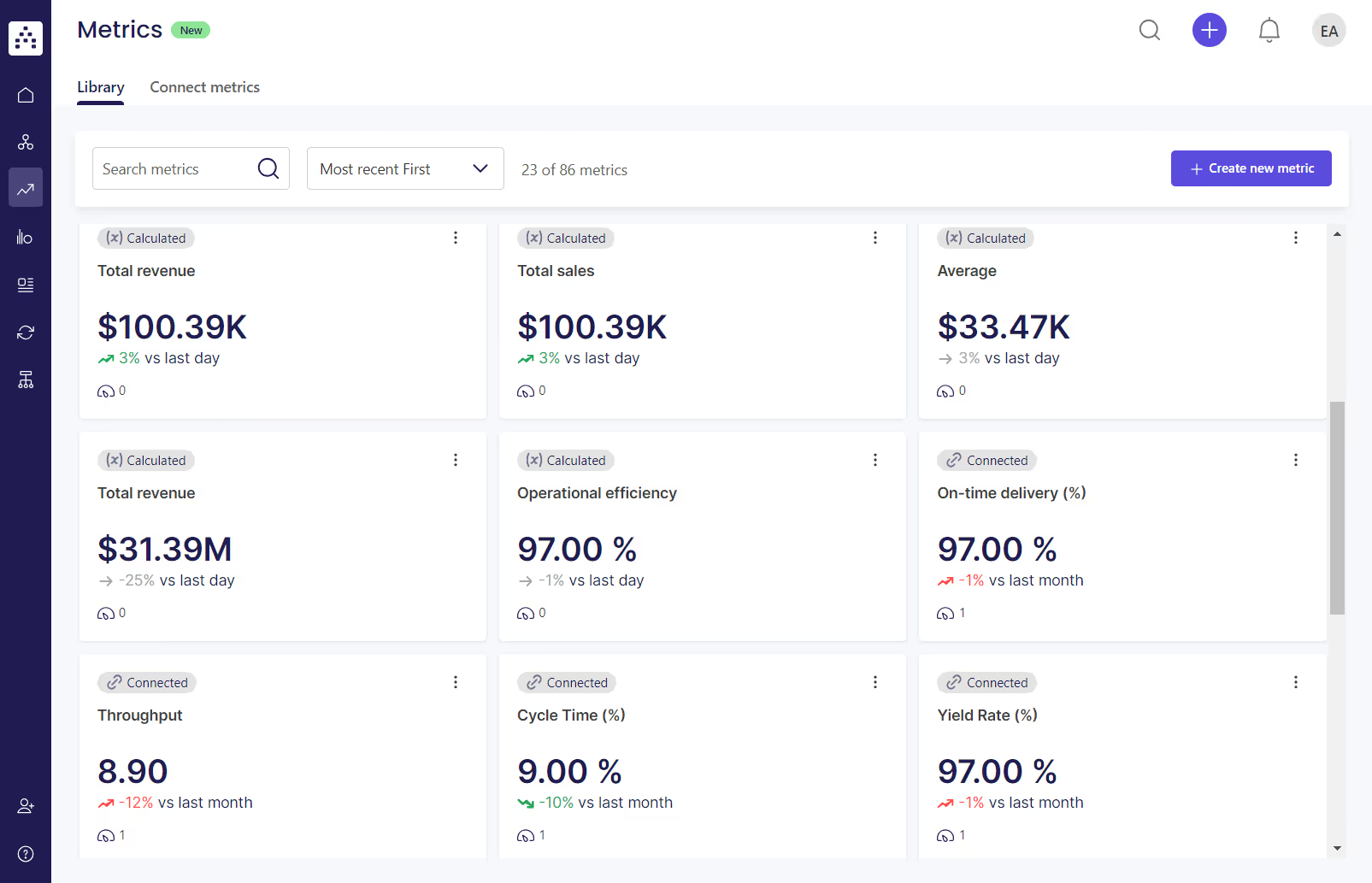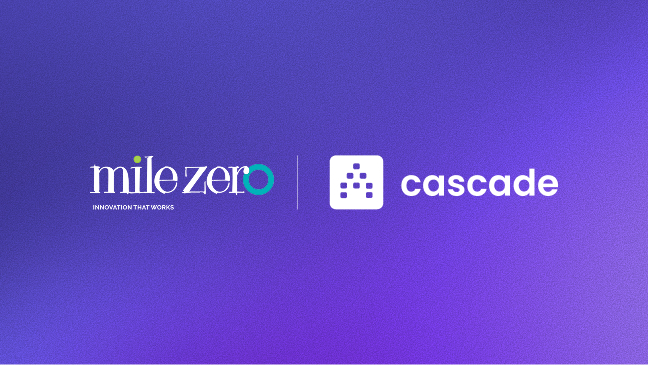Every portfolio manager grapples with challenging decisions regarding which projects and initiatives to undertake and which to cut. Failing to make these hard choices can result in spreading your resources too thin and not maximizing your company’s potential for growth.
However, the hard truth is that the majority of organizations have limited resources. A recent survey revealed that 83% of project management offices (PMOs) admit that their organizations lack the resources to meet business demands.
With limited personnel, time, tools, and budget, it’s essential to strategically allocate these assets to yield the highest returns. This is where Strategic Portfolio Management (SPM) comes into play.
In this article, we’ll define SPM, explore its benefits and challenges, and offer practical strategies for successful implementation.
What Is Strategic Portfolio Management?
SPM is a systematic approach to managing a collection of projects, programs, and other strategic initiatives within an organization. It involves using portfolio analysis to decide which projects to undertake, determine the ideal resource allocation, and monitor the progress of projects to ensure alignment with the organization's corporate strategy.
A staggering 59% of PMOs revealed in a survey that their resources are only somewhat aligned with their business strategies. This indicates that many organizations struggle with their priorities midway through implementation.
Strategic portfolio management aims to maximize the business value and impact of an organization's overall project portfolio. It ensures that programs, projects, and initiatives are selected and executed in a way that supports the organization's strategic objectives, minimizes risk, optimizes resource allocation, and delivers the greatest return on investment.
SPM is also a better version of Project Portfolio Management (PPM). PPM is regarded more as a commodity, as revealed by Gartner research. It’s viewed as a bottom-up approach that’s too departmental. In a rapidly shifting world, SPM is a better portfolio management approach as it deals with the entire lifecycle of an enterprise-wide strategy, including execution, alignment, and adaptation.
What Are The Benefits Of Strategic Portfolio Management?
There are several SPM benefits you can experience if you use this method effectively.
Fast execution
The faster you can make decisions, the quicker you can get initiatives off the ground and running. SPM helps you make quick data-driven decisions because it lets you analyze data in parallel instead of tackling them one by one.
With this method, you can align projects with strategic objectives faster and eliminate redundancies so you can focus on high-impact initiatives and accelerate their execution. This reduces time-to-market, enhances competitiveness, and increases your organization's ability to respond to market dynamics swiftly.
📚Recommended read: 6 Steps To Successful Strategy Execution
Maximized returns
Successful PMOs prioritize business outcomes, including improvement of revenue performance. By using SPM, you can maximize the overall returns of your projects by forecasting the ones that will generate the highest revenue and focusing on them.
By assessing the potential value and risks of projects, you’ll also improve your resource management. You can make better decisions about resource allocation and ensure that business capabilities are directed towards initiatives that achieve their targets. This approach enhances profitability, market share, and the long-term sustainability of the organization.
Fast adaptability
New technologies, tools, and trends put pressure on organizations to adapt fast to survive. Your organization needs to remain flexible if you want to remain competitive.
Change management is crucial but its success hinges on your ability to pivot instantly. SPM helps define your strategy and create aligned roadmaps so that when a change is inevitable, you can quickly secure resources and innovate.
📚Recommended read: Strategy Report: You’re Doomed or You Adapt
What’s The Difference Between Strategic Portfolio Management And Project Management?
Although they sound similar, strategic portfolio management and strategic project management are different.
Strategic portfolio management focuses on the business strategy as a whole to prioritize and align projects to business objectives. With this approach, you can determine the projects that have the highest impact on business outcomes so you can invest more in them.
Meanwhile, strategic project management focuses on managing individual projects from initiation to completion. It’s less concerned about the overall strategy and more concerned about the proper project delivery.
💡Strategic portfolio management is doing the right projects, while strategic project management is doing projects right.
.avif)
With portfolio management, you measure outcomes and use lead indicators like strategic objectives and key results areas to know which initiatives are producing results. On the other hand, project management involves measuring outputs through lag indicators like KPIs.
Together, these two management approaches are instrumental in helping organizations reach their goals.
📚Recommended read: Leading and Lagging KPIs For Your Business + Examples
4 Key Elements Of Effective Strategic Portfolio Management
To fully experience the benefits of an SPM approach, you need to develop the following elements. Gartner breaks down strategic portfolio management into three elements, but we’re adding a fourth one because we believe this adds to a more holistic strategy.

1. Portfolio alignment
The main goal of SPM is to align the entire activity of the enterprise with the business strategy. Your portfolio must be designed to effectively balance the trade-offs between managing risks and prioritizing innovation. Your capacity planning must involve looking at the entire enterprise portfolio and eliminating any projects not contributing to desired business outcomes.
2. Value-driven decision-making
As portfolio managers, you must develop a deep understanding of your business from a financial and operational perspective. You should monitor value-based metrics that will help you evaluate the tangible and intangible benefits of your initiatives. This will reveal the limitations of your current resources so you can strategize on how to maximize them.
You also need clear visibility of the dependencies between your initiatives and business outcomes so you can effectively prioritize the right programs. This visibility will help you understand the business opportunities and risks associated with your decisions.
3. Ongoing portfolio flexibility
Another important element of SPM is your ability to halt any work that doesn’t align with your strategic goals. This flexibility enables quick resource reallocation and funds toward high-impact projects that can help you reach your goals faster.
Portfolio flexibility also demands that you can quickly change the vision, scope, or outcomes of your projects in response to major external disruptions. To keep your portfolio flexible, you've got to keep a sharp eye on your priorities, understand what your organization can handle, and be ready to shift your resources to the projects that matter most.
4. Centralized observability
Just as you can’t build a sturdy house without a strong foundation, you can’t effectively manage a strategic portfolio without the right tools that can flex and handle adaptability at speed.
You need tools, such as strategy execution software, that give you centralized observability of your portfolio and help you close the strategy execution gap. With these in your toolkit, you're equipped to make intelligent, data-informed decisions, create effective strategic plans, and maintain full control over strategy execution.
Key Challenges That Prevent Effective Strategic Portfolio Management
A lot of organizations struggle with implementing SPM. It’s not an easy approach, but one that’s necessary if you want maximum results for your efforts. The following are the key challenges most PMOs experience.
Unclear strategic goals
When strategic goals are fuzzy or unclear, making informed decisions and prioritizing the right projects becomes hard. Without a clear end goal, it's tough to know which initiatives are driving your company forward and how to allocate resources effectively.
22% of PMOs surveyed revealed that unclear objectives and milestones were the reason for project failure. For PMOs to succeed, there must be a clear alignment between success metrics and business goals.
👉How Cascade helps:
Cascade sheds light on blurry strategies by helping you identify the current state of your organization. To know where you're going, you first need to know where you are. With a clear view of your current initiatives and core business metrics, you can make decisions that shape your future performance.

Misaligned resources
Once the main strategy leaves the boardroom, it can be hard to keep it on track in the hustle and bustle of daily operations. It’s easy to focus on the granular details and forget the bigger picture. As a PMO, your job is to keep your eyes on the whole forest, not just the individual trees. This high-level view is key to assigning the right resources to the right projects.
👉How Cascade helps:
Cascade's objective alignment map is like your strategy GPS. It lays out your company’s initiatives and links them to strategic objectives.
%20(1).png)
This visualization makes it easy to look at the big picture without getting lost in details. You'll easily spot the projects that aren't pulling their weight and decide whether they need a tune-up or the boot. You can also check which objectives are on track, at risk, or in the bag, helping you prioritize your resources wisely.
Data silos
Every modern organization uses hundreds of tools in its daily operations. The marketing team has its own set of preferred applications, vastly different from what the sales team uses.
These tools might be perfect for each team, but they can create a headache for the company as a whole. Wrestling with siloed data and tangled spreadsheets can lead to errors that can curb your company's growth.
👉 How Cascade helps:
Cascade supports over a thousand integrations. No matter what tools your teams love, they'll all plug into Cascade, funneling data into one, easy-to-manage place. These integrations ensure nothing slips through the cracks and provides rich insights for your strategies.
Not having an execution-ready and adaptable plan
Strategies aren’t supposed to sit forgotten in pretty PowerPoint slides. However, many organizations fall into the trap of creating beautiful strategies at annual meetings only to forget about them until the next meeting rolls around.
A strategy without a clear executable plan is a recipe for failure. After you’ve created, presented, and approved a strategy, it’s time to act.
👉How Cascade helps:
Cascade makes it easy to execute plans by creating clear roadmaps with timelines and owners associated with every strategy, project, and key initiative.

Lack of consistent performance tracking
Success rides on measuring the right stuff. Without regular performance tracking, you can miss risks and end up burning resources on strategies that just aren't working.
👉 How Cascade helps:
Cascade's strategy dashboards and reports give you a real-time view of your portfolio’s performance. Share them with your stakeholders, secure buy-in for your initiatives, and keep everyone on the same page.
.png)
Run A Strong Strategic Portfolio Management With Cascade 🚀
In the midst of a hectic work environment, Strategic Portfolio Management (SPM) keeps you focused on the big picture.
Don't just manage—deliver results aligned with company goals and flexibly navigate the complexity of the existing business landscape. With Cascade, overcoming SPM challenges becomes easy, paving the way for successful strategy execution.
Cascade enables you a bird's eye view of your portfolio's health, tracking performance against targets, budgets, and deadlines. Craft quick, tailored reports to keep stakeholders in the loop with metrics that matter most to them.
Cascade's integrations with thousands of business tools pull accurate data automatically, keeping you updated as initiatives progress. Imagine orchestrating a well-tuned symphony where everyone in your organization understands the strategies and their role in achieving them.
Using Cascade you can create the ideal portfolio strategy to maximize returns and reduce risk. So—what are you waiting for? Book a 1:1 demo to experience Cascade today.






.png)
.jpg)
.jpg)



